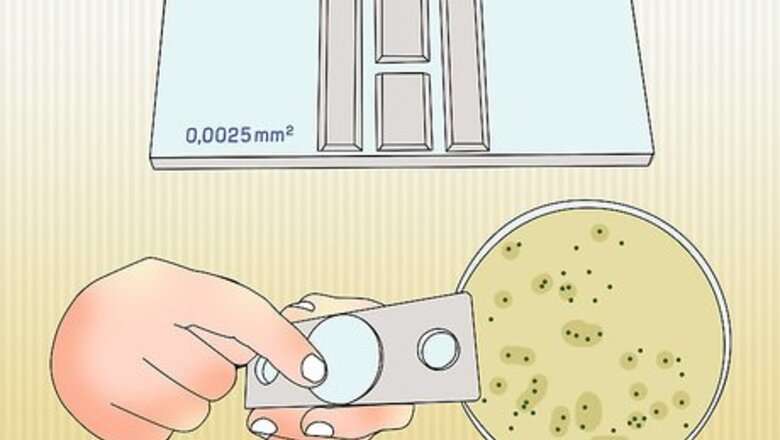
views
X
Research source
Observing Bacteria Directly
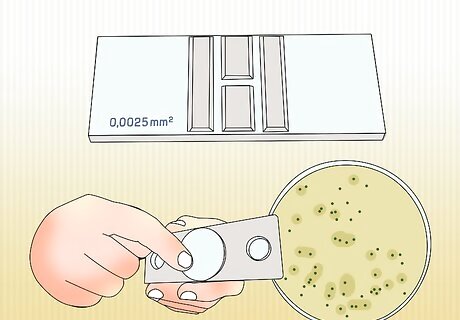
Gather your materials. There are a few special tools you should have in addition to what is stocked in most biology labs. Having your instruments and containers ahead of time will allow you to complete the experiment without having to run back and forth to the cabinet. It is important to know what each piece will be used for up front. You should know some basic terms as well. Get a counting chamber. These tools have a chamber, slide, and microscope built in, so they are easy to set up and use. You can buy them from lab and classroom supply companies. They come with instructions that guide you through the whole process. Get a pour plate or a spread plate. These are the containers you will observe the bacteria in. Culture is the term used to describe an organism grown artificially for an experiment. Broth is a liquid medium that the culture grows in.
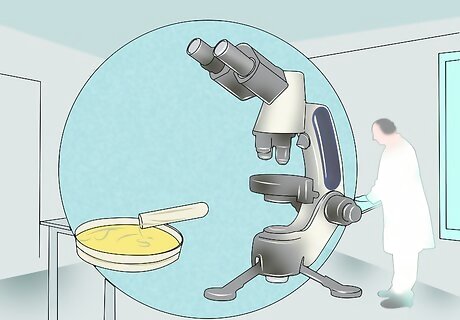
Use your pour plate or spread plate. You can also place the bacteria directly onto a plate for viewing under a microscope. Apply the culture to the plate and place under a microscope. Observe how many bacteria cells there are.
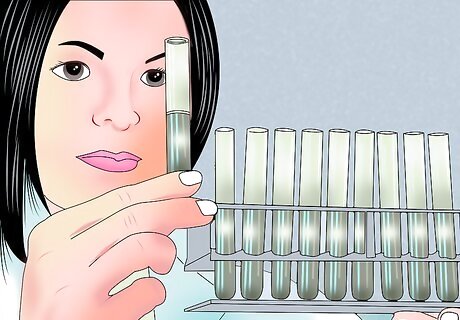
Make sure you have the concentration right. If there are too many bacteria, they will overlap and you won’t get an accurate count. Dilute the culture by mixing it with more broth. If there are too few, you won’t have enough for an accurate number. Filter out the broth using a filtration system, or add more of the culture if you have it available to you.
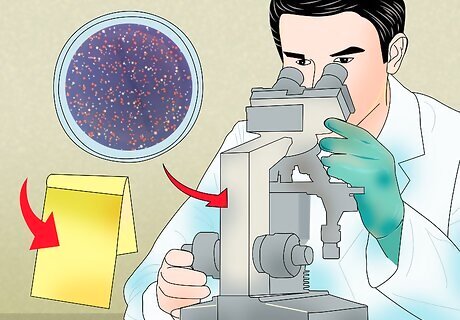
Count the bacteria. The last step is physically counting them. Look through the magnifier on the counting chamber and write down how many you see. Compare this with other tests.
Measuring Wet and Dry Mass
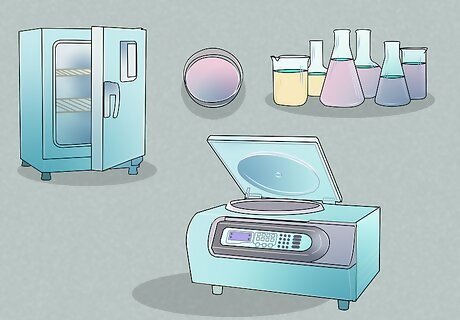
Make sure you have the right equipment. This involves the use of expensive equipment and is time-consuming. Unless your lab is stocked with the right equipment, consider trying a different method. However, if you can, measuring wet and dry mass gives you more consistent readings. You will need: Hydraulic gravity convection oven Aluminum weighing pan Set of flasks Centrifuge or a laboratory filtration system

Make sure your culture is in a flask. If not, pour it into one. It should be in broth at this stage, though it will be separated out again later.
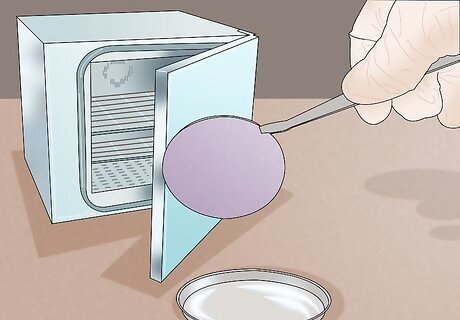
Dry an aluminum weighing pan in your lab oven. An alternative is a cellulose acetate filter membrane, 47mm in diameter, 0.45µm in pore size. Whichever you use, weigh it prior to drying so you know how much to subtract from your measurement later when you have the bacteria cells on it.

Stir the flask you put your culture in so that it is mixed evenly. The cells will naturally sink due to gravity. Give them a stir to make sure they are evenly spread out in the flask. This way you will get a more representative sample.
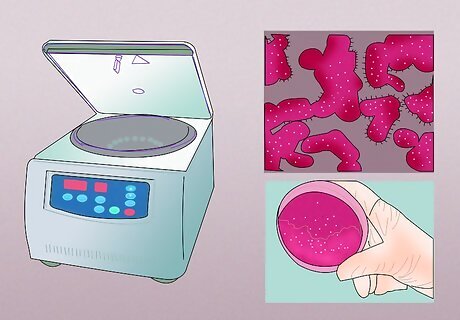
Use a centrifuge to separate the bacteria cells from the broth. This tool spins the flask and a counterweight rapidly, draining the broth and leaving the culture. See this guide for a more detailed description of the process.
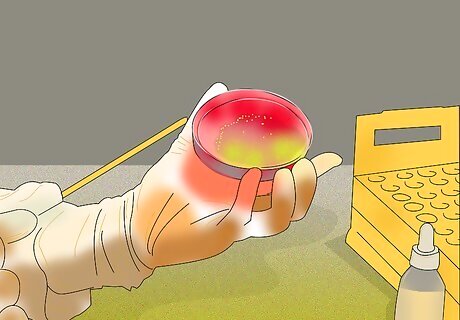
Scrape out the paste and put it on the weighing pan. Discard the broth. You won't need it any more, but you will need the flask, so hold onto it.
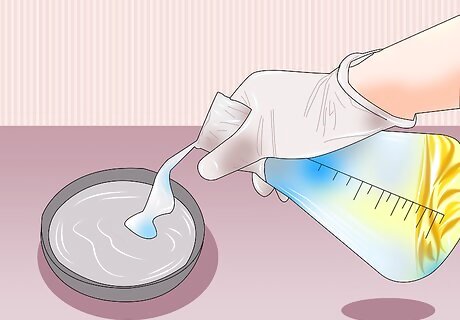
Rinse the centrifuge and pour the rinse water in the pan. Add the flask of rinse water to the bacteria cells. This gives you wet weight.
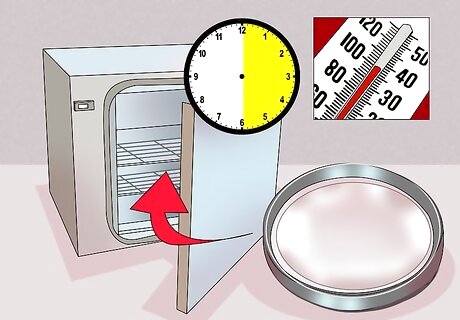
Find the dry weight. To measure dry weight, place the pan in the oven and dry at 100ºC for 6 to 24 hours, following the instructions of your specific oven and/or weighing pan. Make sure you are not over this temperature so the bacteria don't burn. Weigh the bacteria after the drying process is complete, and remember to subtract the weight of the weighing pan to get the dry weight.
Measuring Turbidity

Get the necessary equipment. You will need a light source and a spectrophotometer. These are available in science lab supply stores. The spectrophotometer will have instructions for the proper usage of the model you bought. This equipment is inexpensive and easy to use, so this is one of the more common methods for measuring bacterial growth.
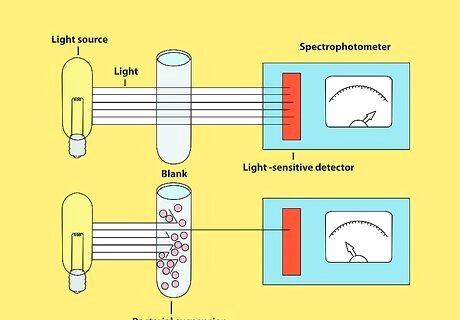
Shine the light through the sample. In layman’s terms, turbidity is how cloudy your sample is. You should get a turbidity reading, which is measured in NTU (Nephelometric Turbidity Units). Your spectrophotometer may take some calibration before you can accurately measure the turbidity of your sample, so consult the manufacturer's reference manual prior to use.

Make some notes. Turbidity corresponds to the amount of bacteria in the sample. The spectrophotometer will also tell you the percent transmission (%T). This number will be higher if the turbidity is lower. Compare your numbers from different tests to measure bacterial growth.




















Comments
0 comment